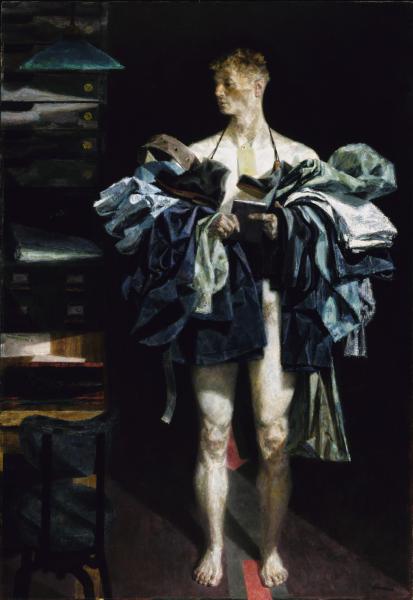
Or, more specifically: when is a man feminine? Gender nonconformity can be hard to find in the SAAM's collection. Without a doubt, it's there, but it is not a dominating theme. Compared to purposefully androgynous works, femininity in works of men comes across more deliberately. Gender is not obfuscated: it is challenged.


A boy is different from a man. The masculine traits of the gender should be fully realized by the time a boy is a man, but before that, in the fleeting time of childhood, a boy could be many things.
In its contemporary context, there would be little doubt that this is a young boy, and that is true now. But, the way a young boy is signaled as a boy is different from current ideas of a boy. This is a boy who looks like he existed before masculinity; his hair is long, and he wears lace and bows, all traits associated more with femininity now much more so than premature masculinity.